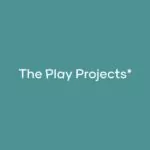
As an Occupational Therapist who works in schools and pre schools with children daily I am really excited to see local governments placing a focus on play, in particular community based free and universal playgrounds. I wanted to take the time to share with you why.
This year I have assessed more than 100 school age students with additional learning needs such as poor attention, language delays, high anxiety and learning difficulties. Almost all of them lacked the fundamental motor skills that were considered ‘normal’ 20 years ago. In fact research today suggests that only 1 in 12 children have the core strength that was considered typical when I was a child.
There seems to be an expectation from parents and educators that motor coordination and play just naturally develop in children. But research shows that this is not at all true. In fact the environment and the people in it play a major role in determining whether or not children will acquire important motor skills and maintain physical health. Researchers have also found that lower levels of physical activity in the early years is a predictor of later health problems.
Currently in Australia obesity related diseases are one of the leading causes of death. Almost 2 out of 3 adults and 1 in 4 children are overweight or obese and these numbers are higher in regional and remote areas than they are in the cities. Obesity costs our government more than $60 billion dollars per year and that doesn’t factor in the costs that learning delays and challenging behaviours are having on the education department.
Then there is the number of children with anxiety. Currently as many as 9% of children have a diagnosed anxiety disorder. Poor vestibular functioning is closely linked to anxiety problems in children. The only way to improve a child’s vestibular functioning is through movement based play. Swinging, climbing, sliding and spinning helps develop a strong vestibular sense which is important for all aspects of learning and development.
Research has proven that physical literacy (teaching children how to balance, climb, jump, hop and skip) decreases the risk of obesity and increases the likelihood of participating in physical activity and sport in later life.
Change in playgrounds over the past 30 years has had an enormous impact on children’s development. As a risk adverse society we have removed all of the ‘excitement’ out of playgrounds (both community based and those in school/early learning centres). In doing so we have significantly reduced the movement and active play and risk taking opportunities that they provided. In fact research shows that today around 90% of outdoor play time for pre school aged children is actually spent in sedentary play. Hence, having playgrounds that include natural elements as well as climbing, swinging, sliding and spinning elements is important because it creates fun and challenging experiences that encourage kids to move. In addition to the movement benefits, this type of play teaches children problem solving, perseverance, resilience, cooperation, and communication. It also encourages them to challenge themselves and overcome their fears, teaches them what it feels like to work at something and experience the intrinsic rewards of success rather than that determined by a teacher, coach or parent.
Having a free, accessible, fun and challenging playground in our community gives families valuable infrastructure that enables them (no matter what their lifestyle, education or income level is) to give their children the opportunity to develop these much needed skills.
The joy that movement brings all of us is immensely valuable. As adults we think back to our best childhood memories and so many of those involved active, risk taking play. A large adventure playground will allow children today to access fun, risk taking play in a safe and supported environment.
It’s time to change our focus from just treating health problems once they develop to promoting health from the beginning. I believe starting with children and how they play is the most effective way to do it.
Play is the work of a child, and the most powerful health promotion initiative to enable us to grow a generation of happy, healthy and confident kids. I can’t wait to see the health impacts this playground will have on the children in our community.
Maybe next week we can talk about tourism and the economic benefits regional playgrounds have on communities. If you’re keen to know more about this check out Bright, Griffith, Shepparton, Albury and Wodonga’s great playgrounds.
For more info about the research on Play and Movement check out this article https://www.easternct.edu/center-for-early-childhood-education/e-clips/importance-of-play.html

